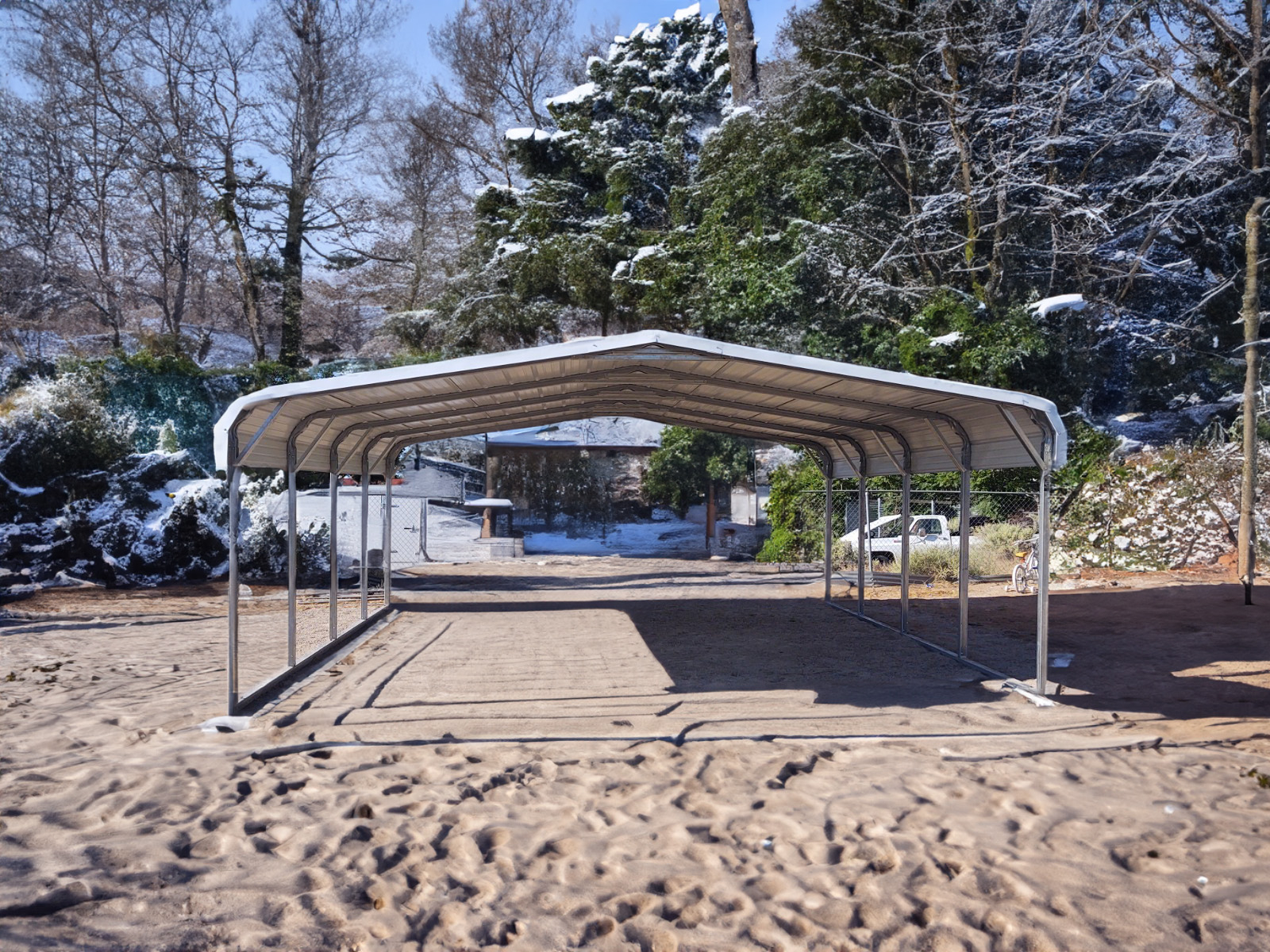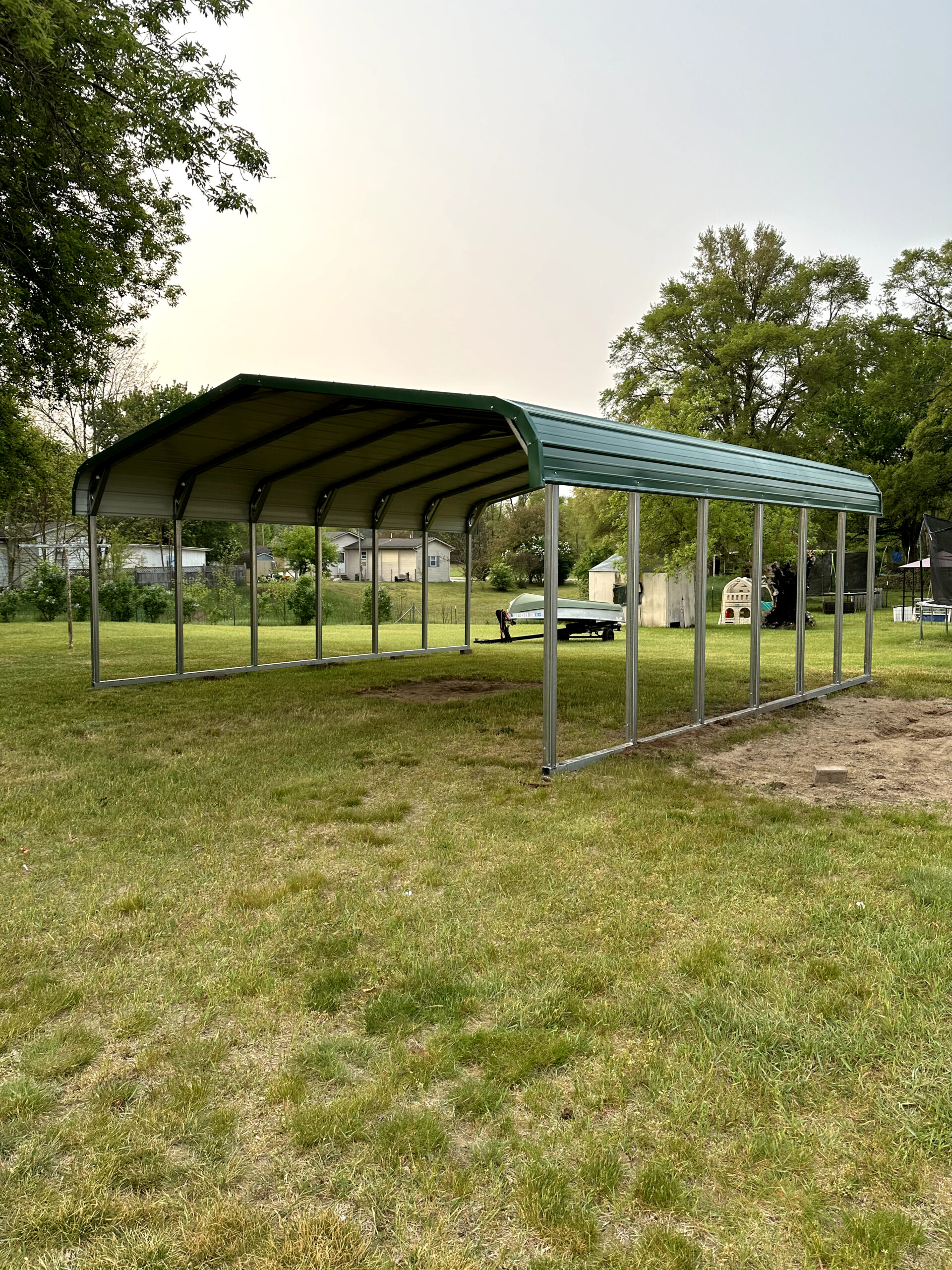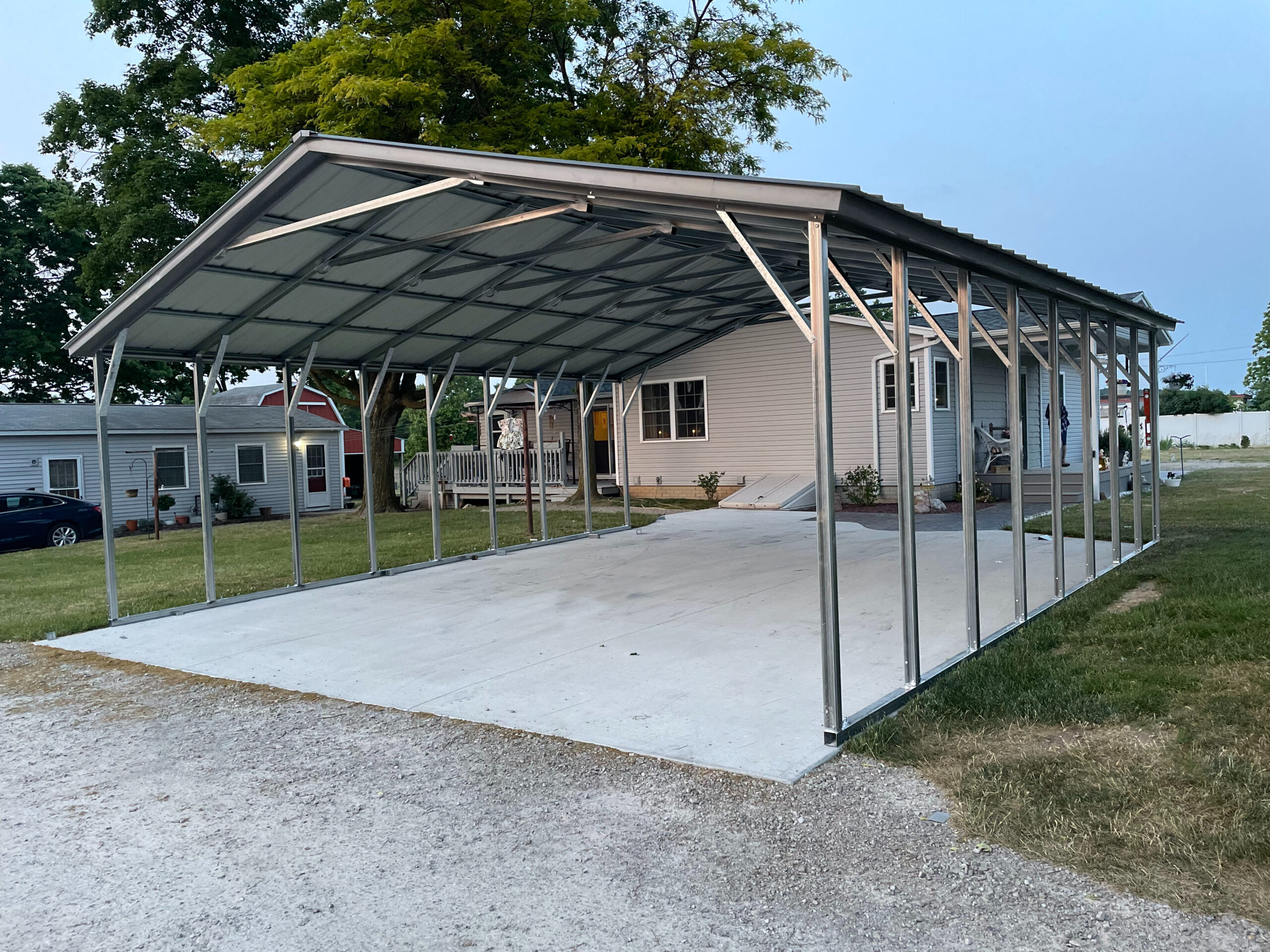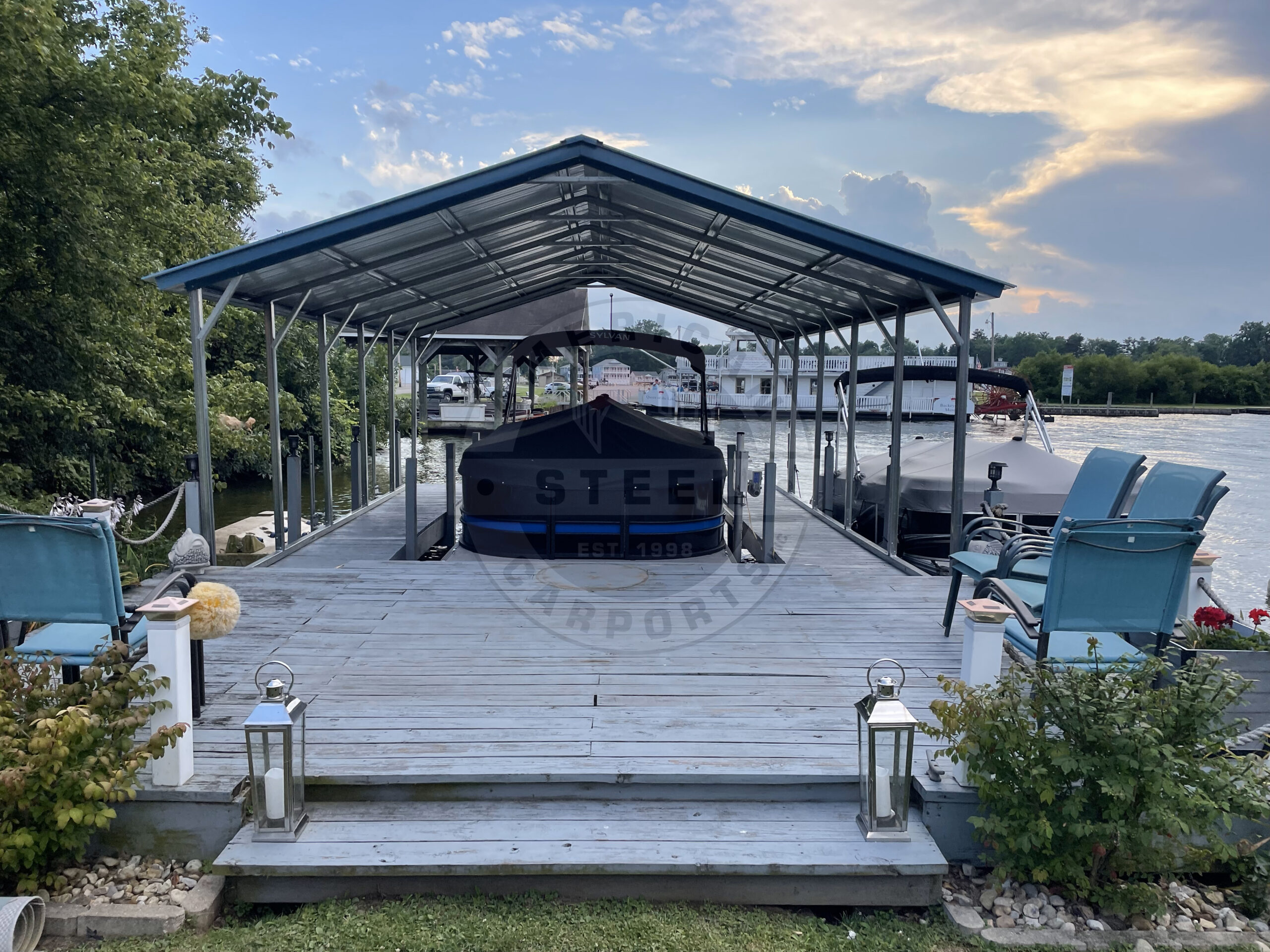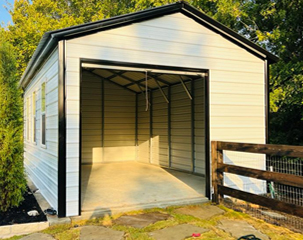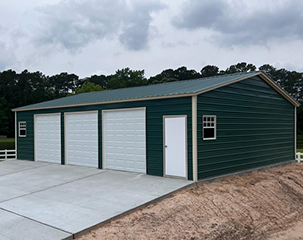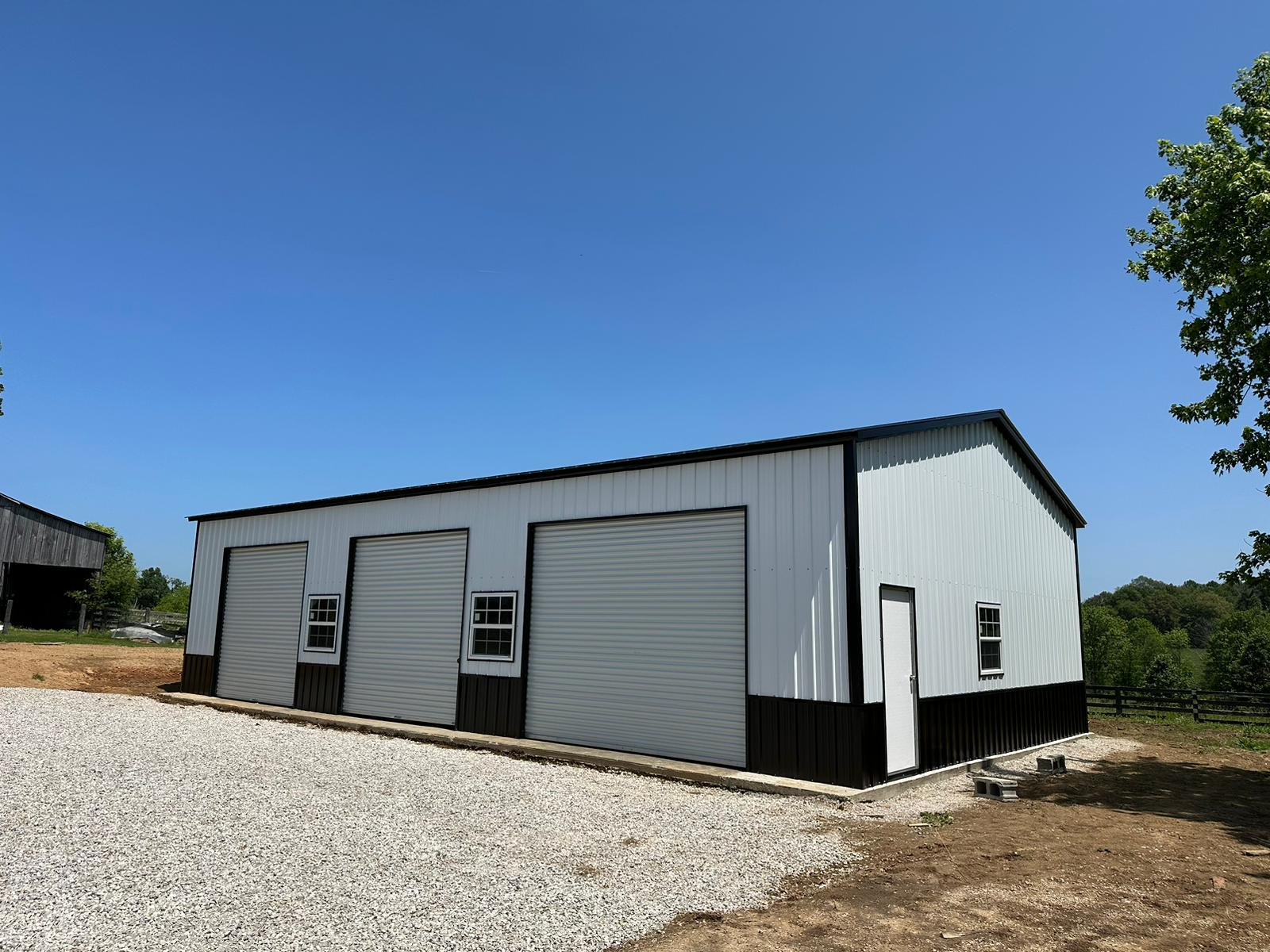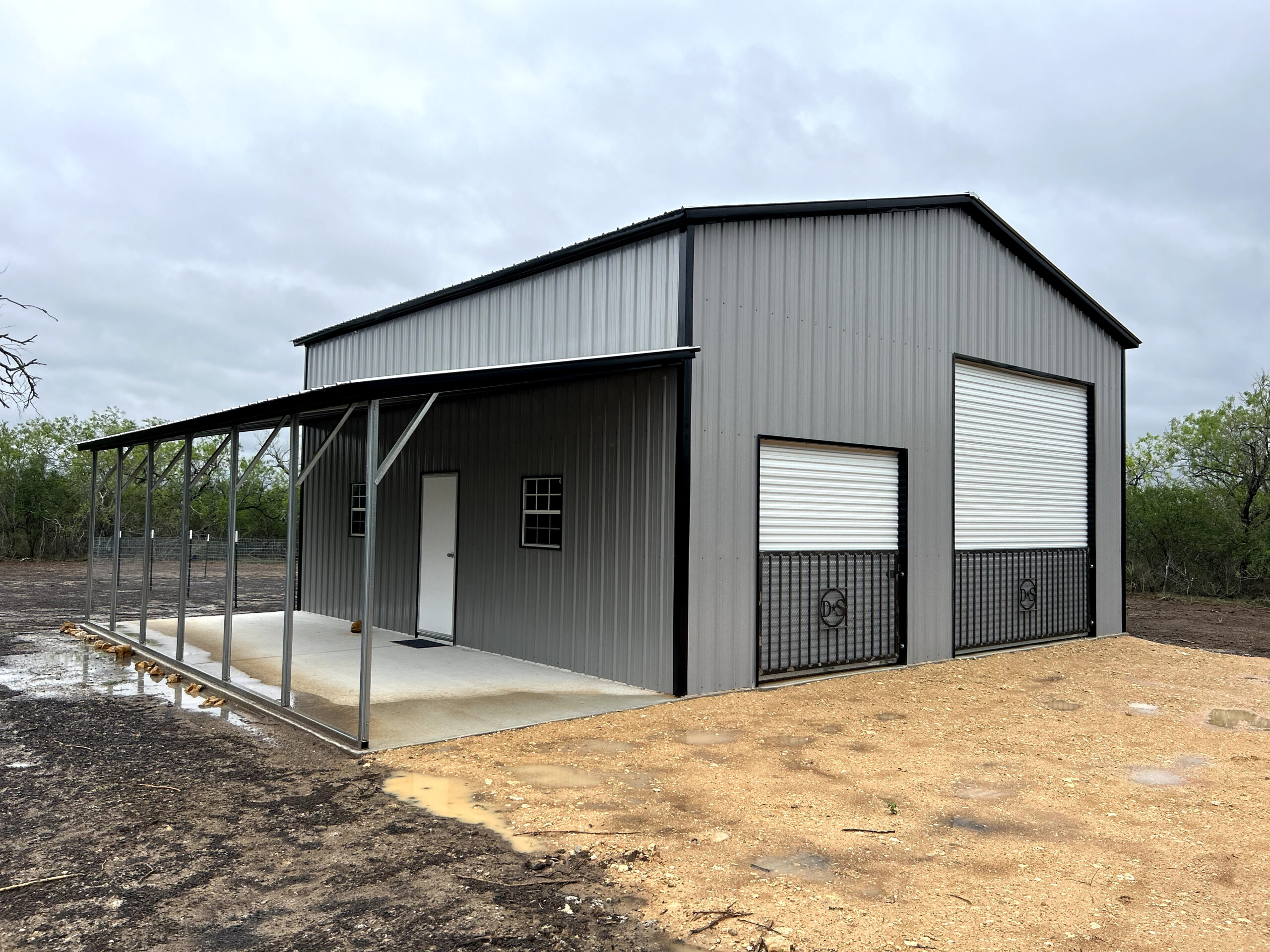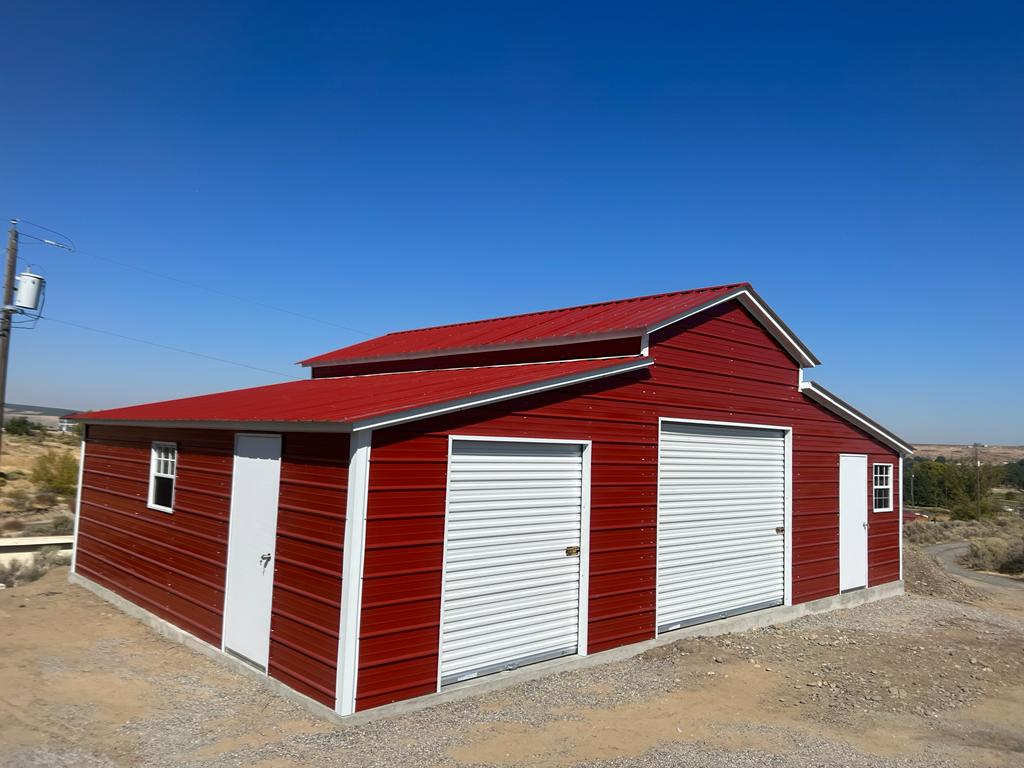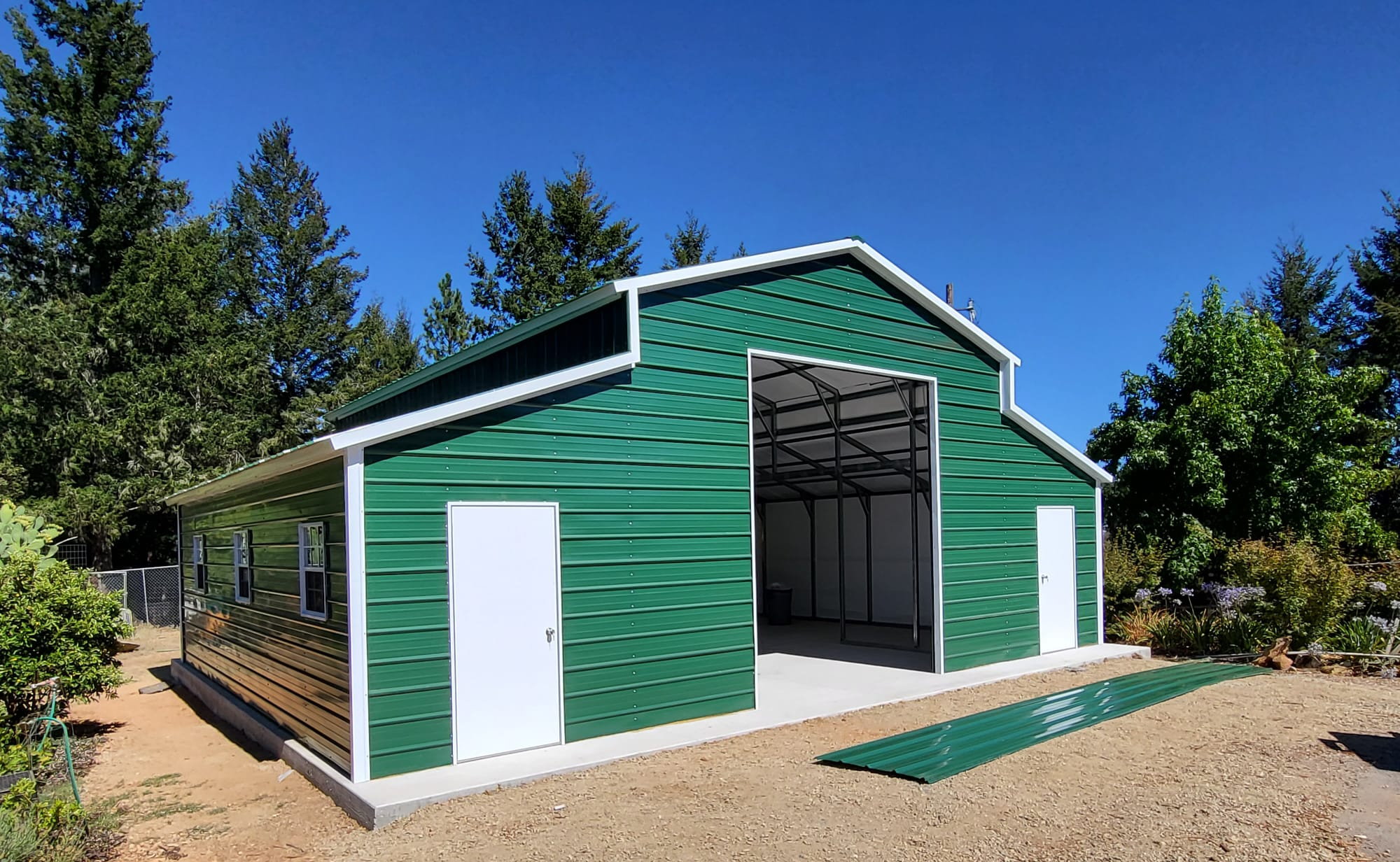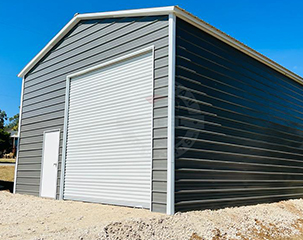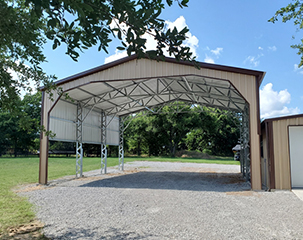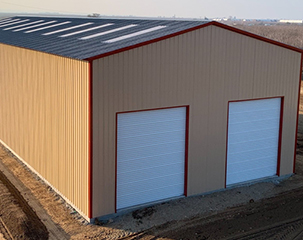Metal garages are something we’ve long strived to perfect, because with the perfect metal garage, you’ll have plenty of storage space. You can put your lawnmower, weed eater, farm tools, and other equipment in a safe, dry space and still have enough room to park your car. And that, folks, is what makes metal garages and steel sheds among the most valuable additions to your home or workplace. They make life easier. Here’s how.
The right metal garage gives you easy access to just the right kind of storage space. This is especially true if you have a load of household possessions in need of storage and no place to put them. The perfect metal garage lets you store everything with confidence, where you know it will be dry and you know it won’t be subjected to weather damage or theft.
But how do you find the right metal garages? For a high-quality solution to your storage needs, metal garages from American Steel Carports provide lasting peace of mind. Take a look at this 30′W × 25′L × 9′H:
- Vertical Roof
- 12-Gauge Galvanize Tubing
- 9’x7 Roll-Up Door
- 16’x7′ Overhead Door
- 36″x80″ Walk-In Door
- 2 – Windows
- L-Brackets
The steel construction is designed and engineered for long-lasting protection against rain, snow, sleet, and hail—not to mention damaging wind and rain. With the right steel garage, even pollen and debris are things of the past. You’ll save countless hours when you don’t have to wash your car of all the natural elements that might harm your perfect paint job. Metal garages provide shelter for your valuable vehicles and storage space for anything you can’t bear to see damaged by the hazards of nature.
You can customize the size and color of any metal building to your needs. Give us a call at 866-730-9865, and let our experts assist you in customizing the BEST structure within your BUDGET. Remember, delivery and installation are INCLUDED on your level land or concrete pad!


